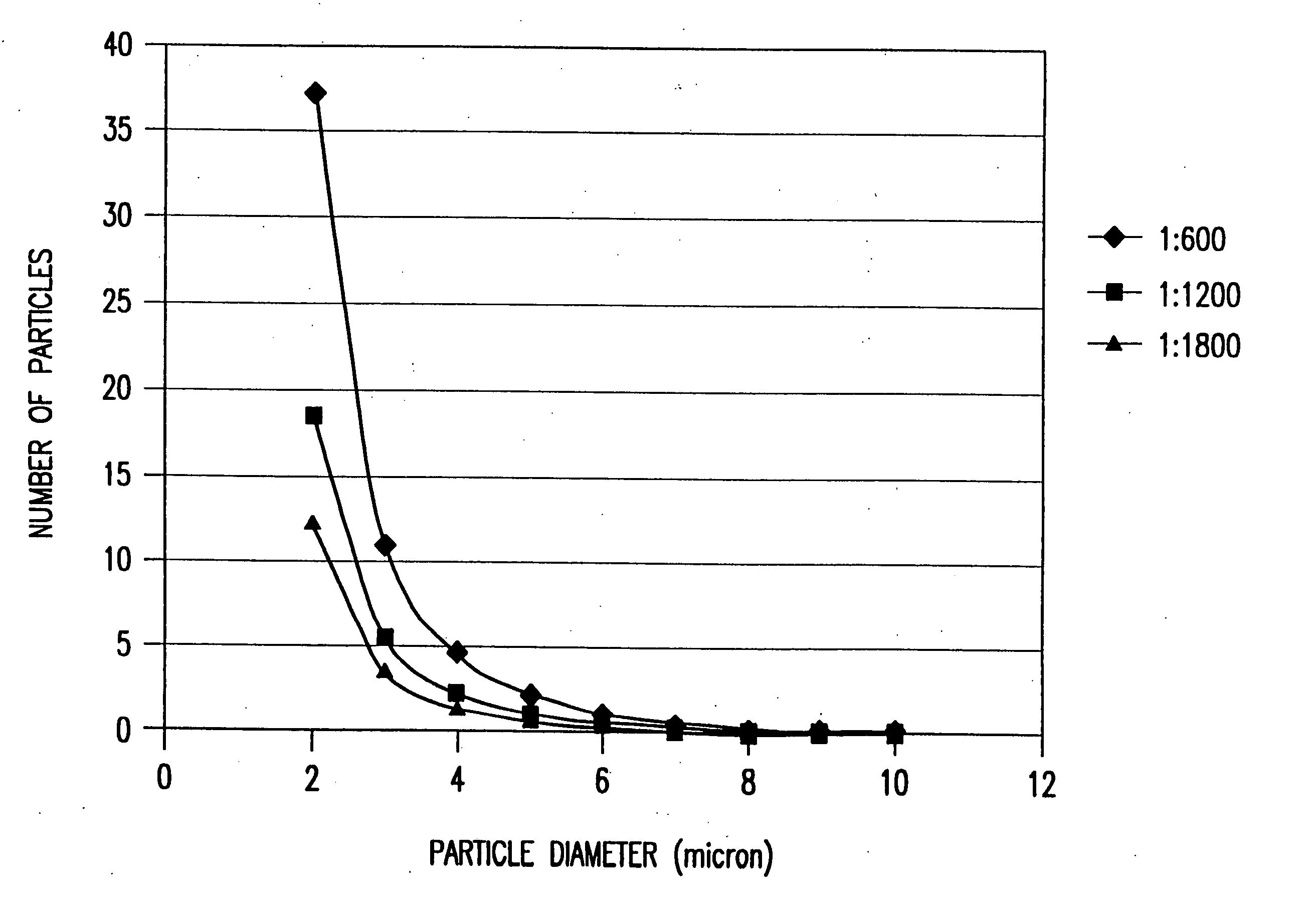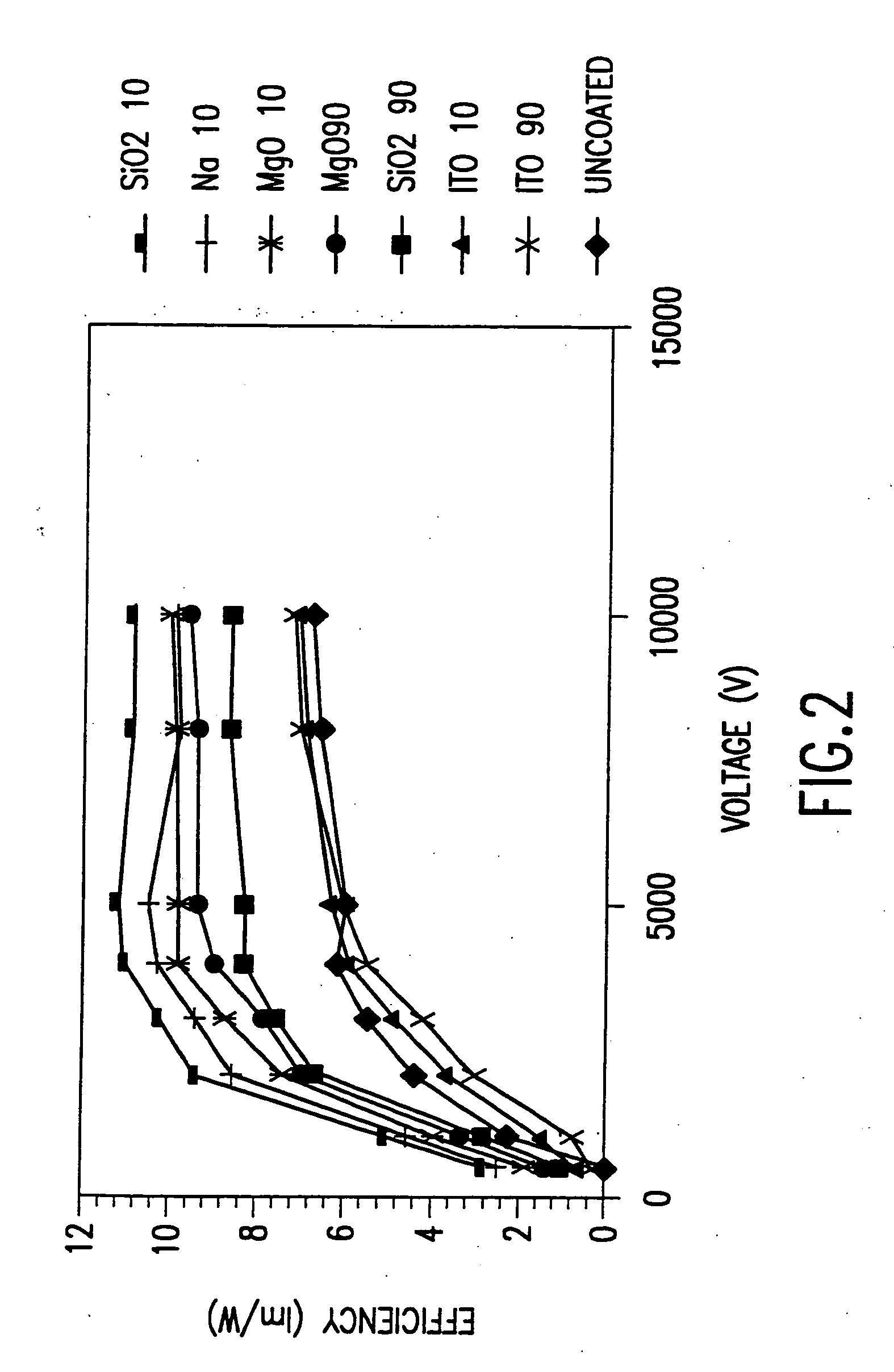Method for coating small particles
- Summary
- Abstract
- Description
- Claims
- Application Information
AI Technical Summary
Benefits of technology
Problems solved by technology
Method used
Image
Examples
example 1
[0050] This example details the steps to make a non-metallic indium tin oxide electrically conducting coating on a microcrystalline phosphor.
[0051] In this case, a 90 nm (15 wt %) indium tin oxide coating on a Nichia ZnS:Ag,C1 phosphor particles composed of a mixture of particles of 1-7 microns in diameter and agglomerates 3-9 microns in diameter. A precursor solution was made by mixing in 250 ml of isopropyl alcohol, 1.1 g indium methyl (trimethyl) acetyl acetate and 0.054 g tin isopropoxide. Since the indium and tin alkoxides are not stable in the presence of water, the reaction was carried out in isopropanol that was previously distilled in the presence magnesium to remove any dissolved water from the solvent.
[0052] A standard precursor solution “A” of 1.1 g of liquid indium methyl (trimethyl) acetyl acetate and 0.054 g solid tin isoporoxide in 250 ml of isopropanol was prepared in a dry box and sealed. Once the alkoxides are in solution, they do not react with water at tempera...
example 2
[0054] This example details the steps to make non conductive 90 nm thick SiO2 coatings on ZnS:Ag, C1 phosphor particles described in Ex. 1.
[0055] A stock solution was made by mixing 0.08 ml tetraethyl orthosilicate, 30 ml ethanol, 0.2 ml water and 0.62 ml hydrochloric acid. One gram of the same phosphor particles as in Ex. 1 was mixed with 2.1 m. of the stock solution and 600 ml ethanol. The slurry, at room temperature and at pH of 4.2, was sprayed into a drying zone maintained, as in Ex. 1, at 350° C. and heat-treated at 450° C. for 2 hours. X-ray diffraction of the coated powder showed the presence of ZnS and a broad amorphous hump from SiO2. Scanning electron microscope investigation showed the presence of a coating on the particles while energy dispersive x-ray analysis showed the presence of Zn, S, Si and O. Immersing the coated and un-coated phosphor particles in 0.1 molar and 12 molar hydrochloric acid was used to determine continuity of the coating. After 10 minutes, the un...
example 3
[0056] This example demonstrates the application of a hybrid coating on phosphor particles.
[0057] The hybrid coating was formed on the phosphor particles of Ex. 1 by first coating the particles with a 90 nm thick layer electrically non-conducting silicon dioxide, as in Ex. 2, and then coating the coated particles with a 90 nm thick layer of electrically conducting indium tin oxide, as in Ex. 1.
PUM
 Login to View More
Login to View More Abstract
Description
Claims
Application Information
 Login to View More
Login to View More - R&D
- Intellectual Property
- Life Sciences
- Materials
- Tech Scout
- Unparalleled Data Quality
- Higher Quality Content
- 60% Fewer Hallucinations
Browse by: Latest US Patents, China's latest patents, Technical Efficacy Thesaurus, Application Domain, Technology Topic, Popular Technical Reports.
© 2025 PatSnap. All rights reserved.Legal|Privacy policy|Modern Slavery Act Transparency Statement|Sitemap|About US| Contact US: help@patsnap.com



